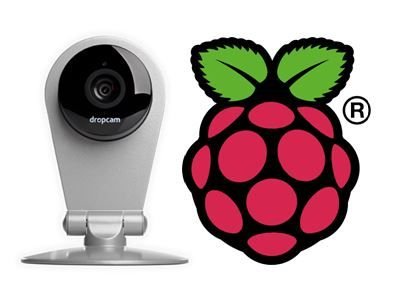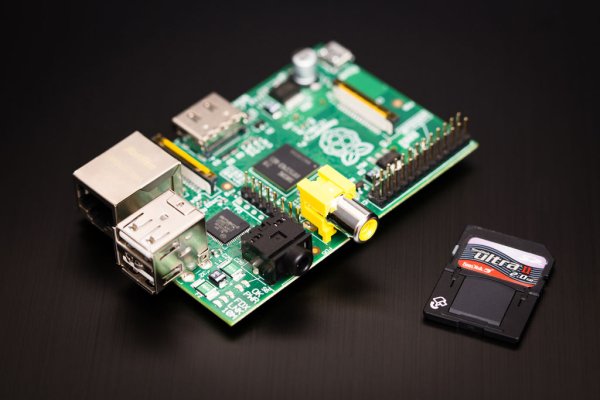I was looking for a way to check in on my house while away as well as have any motion captured and uploaded to the internet as a security camera. Doing a little research online and realizing that I had a raspberry pi and a usb webcam not being used for anything else, This is what I put together.
Please note, this is a brute force method and does not provide any type of security to the webcams stream but its my first time working on something like this.
Step 1: Resources
I have to start with credit to the websites that I used for my research:
http://www.lavrsen.dk/foswiki/bin/view/Motion/WebHome – The software I used was called Motion, it handles the streaming of the webcam to the web as well as detecting motion and saving the movie files.
https://github.com/andreafabrizi/Dropbox-Uploader – This software allow you to sync your files into a Dropbox Account
http://www.slblabs.com/2012/09/26/rpi-webcam-stream/ – This site explains a few different ways to setup the camera on the raspberry pi to set up a simple web stream of the image.
http://mogshade.wordpress.com/2012/12/23/simple-home-security-with-raspberry-pi-and-dropbox/ – This site is where i started with for implementing the upload of the movie files to a Dropbox account
http://www.instructables.com/id/Host-your-website-on-Raspberry-pi/ – This Instructable was used to set up a simple website to view your Web Stream from.
Step 2: Setting Up Your Raspberry Pi
First things first. The raspberry pi should be setup with a standard version of Raspbian. If any help on doing this is needed please refer to http://www.raspberrypi.org/ or http://learn.adafruit.com/adafruit-raspberry-pi-lesson-1-preparing-and-sd-card-for-your-raspberry-pi
We also need to setup a SSH connection to access the Raspberry Pi remotely. So do this refer to http://raspberrypi4dummies.wordpress.com/2013/03/17/connect-to-the-raspberry-pi-via-ssh-putty/
Now You should setup port forwarding for your raspberry pi for both port 80 and 8081
while you are in your router settings also write down your Raspberry Pi's Public IP address as it will be what we use in the next few steps.
Step 3: Installing the Motion Detection Software
Now lets install the Motion Software onto the Raspberry Pi.
1) Install Motion using the following commands:
sudo apt-get update
sudo apt-get upgrade
sudo apt-get install motion
2) Now lets setup the Motion Software, the following will open the configuration file:
sudo nano /etc/motion/motion.conf
a) In this file, you can adjust a whole bunch of things in the motion software but there are a few things that we need to change first
daemon – default is set to OFF, we need to set it to ON so that it will run in the background
webcam_localhost – Set to OFF so that you can access the stream from other computers
stream_port – Take note of the port as this is where you will point your browser to view the stream
control_localhost – Set to OFF as this will allow you to adjust some of the features remotely (I dont use this but it could be useful)
control_port – Take note of this port as it will be how you can change some parameters remotely in your web browser
framerate – I set this to 2 or 3 frames per second (over 5 will bog down your Pi)
b) We also need to change one last setting:
sudo nano /etc/default/motion
change “start_motion_daemon=no” to “start_motion_daemon=yes”
Now if you start the Motion software, in some browsers you will be able to view the stream. if you cannot yet, we will correct that in the next step.
Step 4: Setting up the Web Server
Next thing to make the web stream visible from nearly all browsers we need to setup a small web server on the raspberry pi along with a simple HTML page.
We are going to install Apache, PHP5, and PHP5 mod for apache. Not all of them may be used in this project but they are good to have in case you want to make your website a bit more that we will setup here.
Now Install the applications with the following command:
sudo apt-get install apache2 php5 libapache2-mod-php5
Next allow overrides:
sudo nano /etc/apache2/sites-enabled/000-default
Change “AllowOverride None” to “AllowOverride ALL”
Now restart the server to to allow the overrides
sudo service apache2 restart
Now your Website is Up and running. If you type the IP address for your Raspberry Pi into a browser you should be able to see a simple website.
Step 5: Setting Up a Basic Webpage
Now that you have a basic website being hosted on your raspberry Pi as well as the motion capture software lets combine the two.
first lets change the permissions to the directory for the HTML file
sudo chmod 777 /var/www
If you type in the following command line it will bring you to the HTML file that is the front page of your website:
sudo nano /var/www/index.html
This file currently contains the HTML code for a very basic website. We are going to change it to the following in order to display the web streaming image.
<xmp>
<html>
<body>
<h1> Raspberry Pi DropBox Camera Stream </h1>
<img src=”http://Raspberry pi's IP:8081″>
</body>
<html>
</xmp>
Note: Remove the <xmp> & </xmp>, this was the only way I know to get HTML into an instructable
Save this file and then in a web browser type in the raspberry pi's IP address and check out your new website.
For more detail: Raspberry Pi DropCam Alternative



